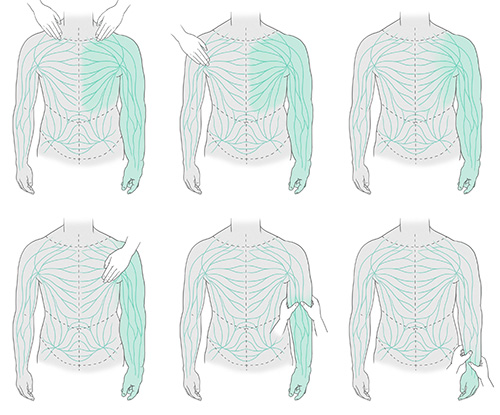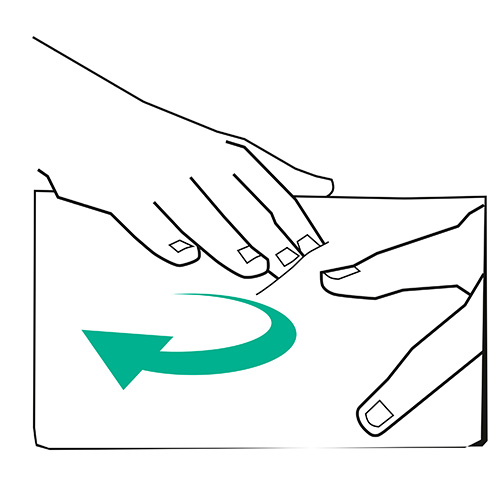The three main methods of MLD are based on Asdonk, Vodder, and Földi. The four primary terms for hand movements coined by Dr. Emil Vodder are pump, rotary, stationary circle, and scoop. They must all be performed gently and in a mainly circular motions. This stretches the skin. We differentiate between a pushing phase in the direction of the desired drainage and a passive decongestion phase. The movements are adapted to the relevant body part.
In cases of a hardened (manifest) lymphoedema, further movements are required, such as the ring-shaped oedema movement, the comprehensive loosening movement and the comprehensive shifting movement. When these hand techniques are performed, treatment is adapted to the consistency of the tissue – the firmer the oedema, the higher the pressure.
These hand movements activate lymphatic drainage by improving the pumping performance of the lymph vessels. This creates a stimulus for a higher pumping frequency of the smooth muscle cells in the lymphatic pathways. Repeating the movements several times results in an increased flow rate.




